Endogenous Metabolite
Metabolite results when a drug is metabolized into a modified form which continues to produce effects. A metabolome in a given body fluid is influenced by endogenous factors such as age, sex, body composition and genetics as well as underlying pathologies.The levels of the enormous array of unique small-molecule metabolites are usually kept tightly regulated by the activity of a very large array of enzymes and transporters responsible for the production, transformation, degradation, and compartmentalization of these small molecules.The levels of the endogenous small molecules present in the brain are normally tightly regulated.
Targets for Endogenous Metabolite
Products for Endogenous Metabolite
- Cat.No. Product Name Information
-
GC33704
6-Hydroxymelatonin
6-Hydroxymelatonin is a primary metabolic of Melatonin, which is metabolized by cytochrome P450 (CYP) 1A2.
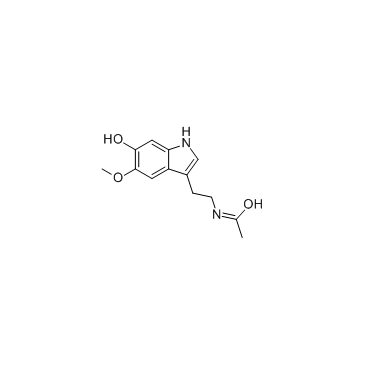
-
GC38278
6-Hydroxynicotinic acid
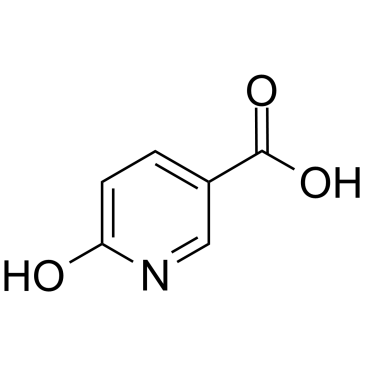
-
GC10067
6-Hydroxynicotinic acid
NULL
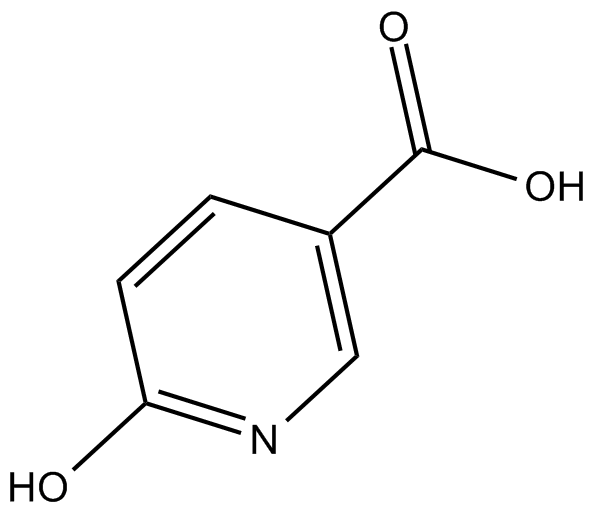
-
GC62816
6-Hydroxypyridin-2(1H)-one hydrochloride
6-Hydroxypyridin-2(1H)-one hydrochloride is an endogenous metabolite.
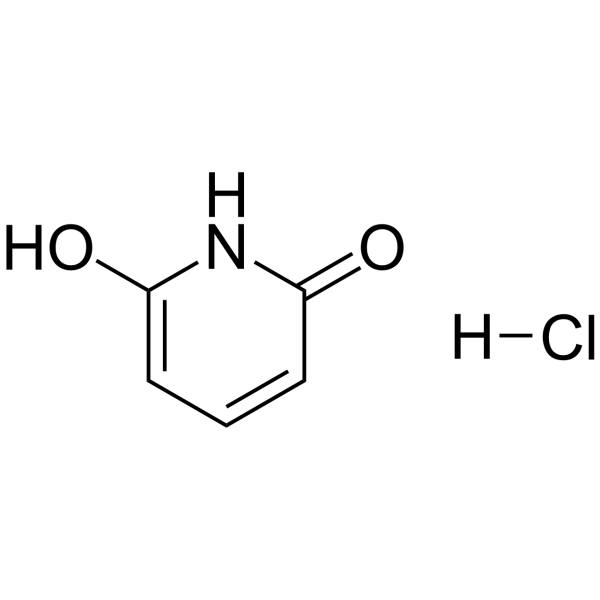
-
GC64741
6-Methylnicotinamide
6-Methylnicotinamide, a derivate of nicotinamide, is an endogenous metabolite.
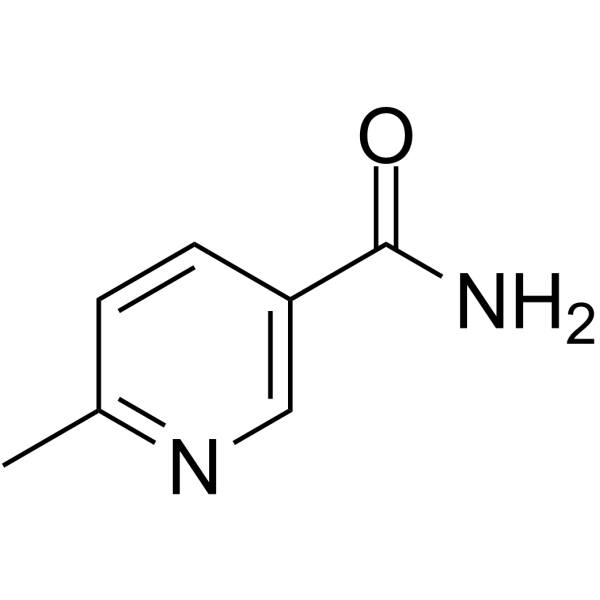
-
GC65015
6-Phosphogluconic acid trisodium
6-Phosphogluconic acid trisodium is a potent and competitive phosphoglucose isomerase (PGI) inhibitor with Kis of 48 μM for glucose 6-phosphate and 42 μM for fructose 6-phosphate.
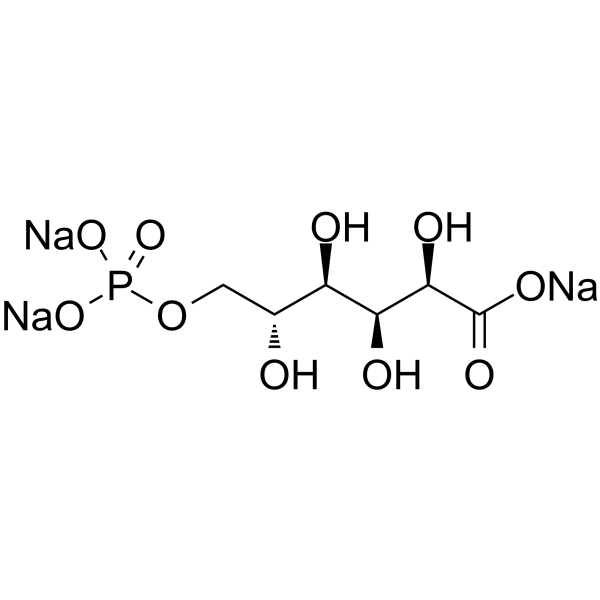
-
GC40087
7α-hydroxy-4-Cholesten-3-one
7α-hydroxy-4-Cholesten-3-one is a metabolite of 7α-hydroxy cholesterol and an intermediate in the biosynthesis of bile acids.

-
GC10533
7,8-dihydro-L-Biopterin
A precursor in the synthesis of BH4
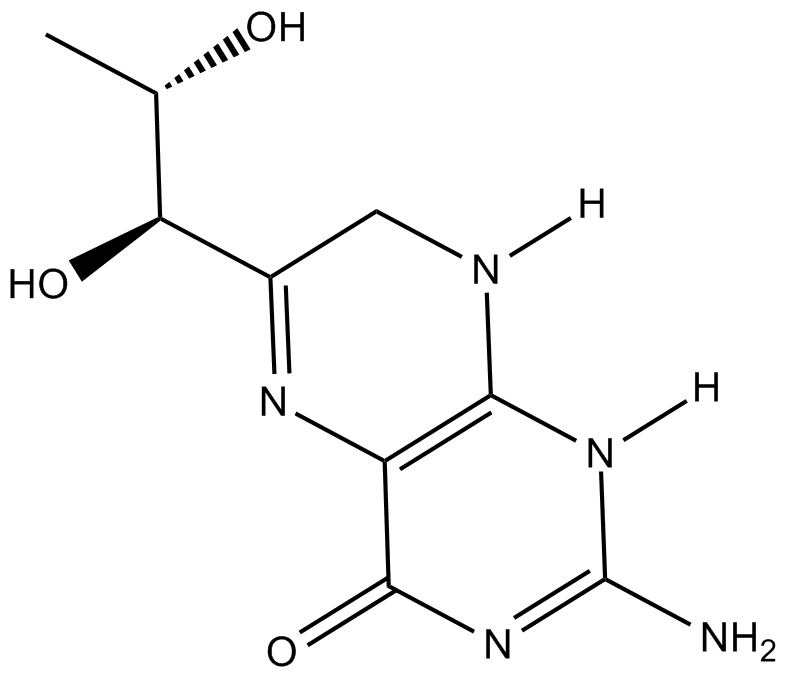
-
GC45673
7,8-Dihydroneopterin
An antioxidant

-
GC33450
7-Dehydrocholesterol
An immediate precursor to cholesterol
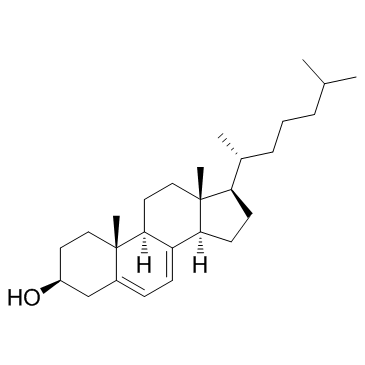
-
GC39474
7-Ketolithocholic acid
7-Ketolithocholic acid (3α-hydroxy-7-oxygen-5β-cholic acid) is a kind of bile acid, 7-Ketolithocholic acid can be absorbed, 7-ketolithocholic acid inhibits the production of endogenous bile acid, and can affect the secretion of biliary cholestero.
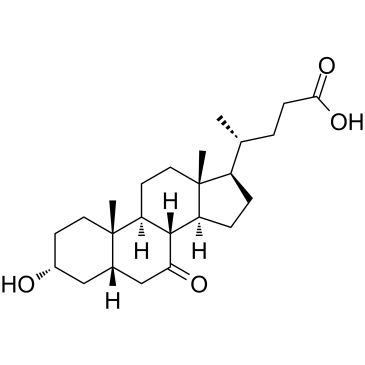
-
GC33616
7-Methylguanine
7-Methylguanine is a metabolite of DNA methylation.
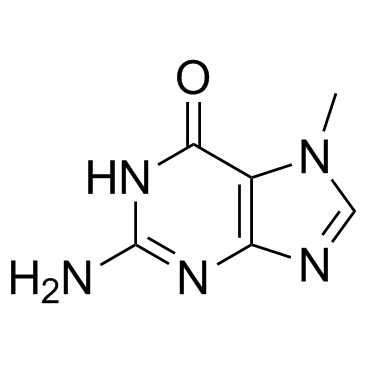
-
GC62817
7-Methylguanosine 5’-diphosphate sodium
7-Methylguanosine 5'-diphosphate (7-Methyl-GDP) sodium, a cap analog, can be used in the synthesis of mRNA cap analogues.
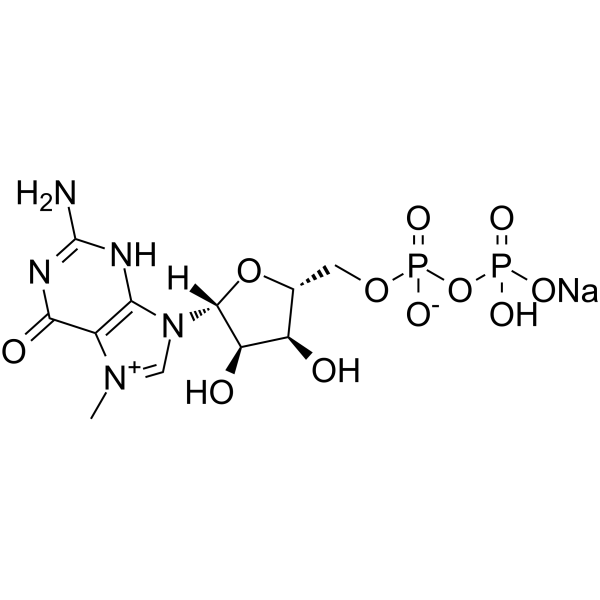
-
GC31617
7-Methylxanthine
7-Methylxanthine, a methyl derivative of xanthine, is one of the purine components in urinary calculi.
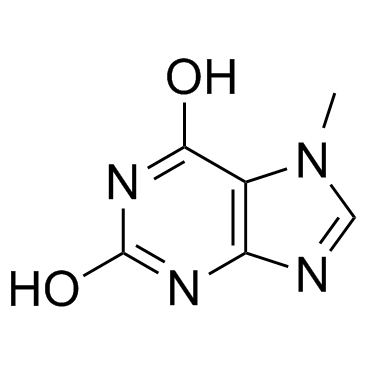
-
GC14433
7α,25-dihydroxy Cholesterol
A GPR183 agonist
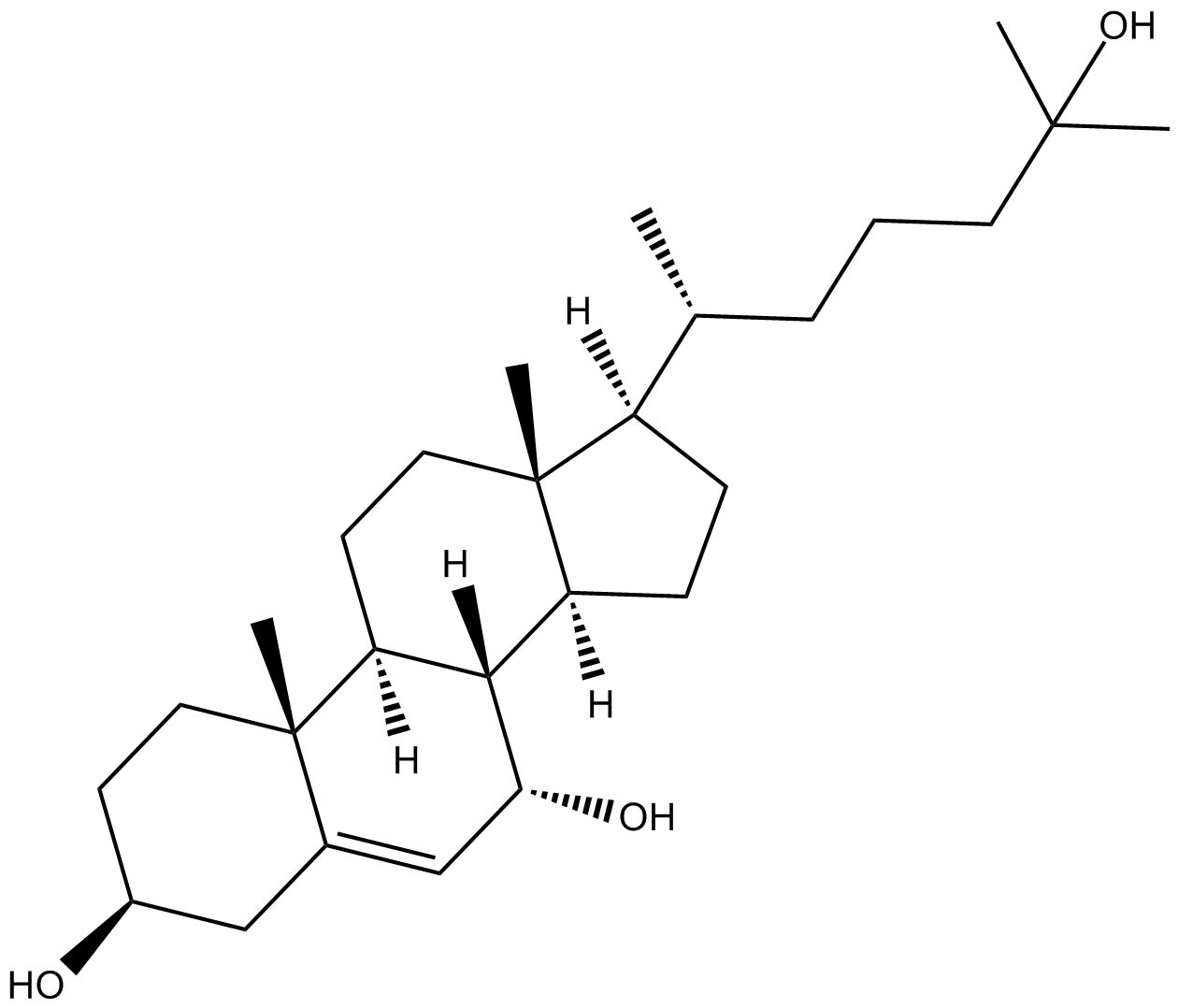
-
GC18544
8-dehydro Cholesterol
8-dehydro Cholesterol (8-DHC) is an isomer of the cholesterol precursor 7-DHC .
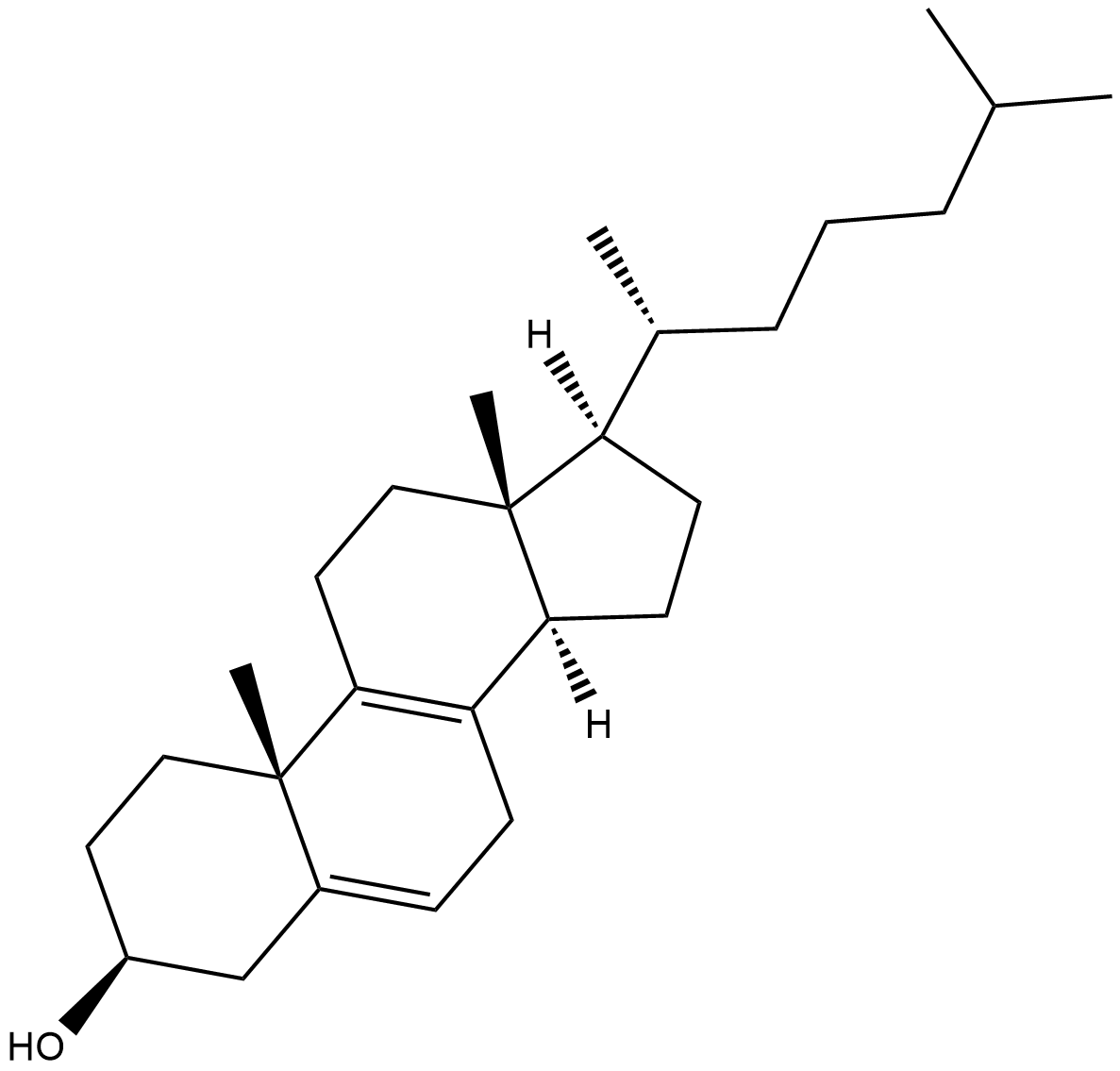
-
GC40926
8-Hydroxy-2'-deoxyguanosine
8-Hydroxy-2'-deoxyguanosine is produced by oxidative damage of DNA by reactive oxygen and nitrogen species, including hydroxyl radical and peroxynitrite.

-
GC35204
8-Hydroxyguanine
8-Hydroxyguanine is a major pre-mutagenic lesion generated from reactive oxygen species.
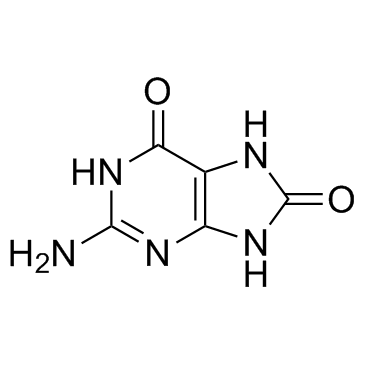
-
GC31219
8-Hydroxyguanosine
Product of oxidative damage to RNA
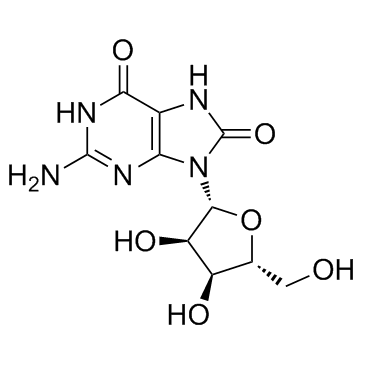
-
GC18515
8-iso Prostaglandin F2α
8-iso PGF2α is an isoprostane produced by the non-enzymatic peroxidation of arachidonic acid in membrane phospholipids.
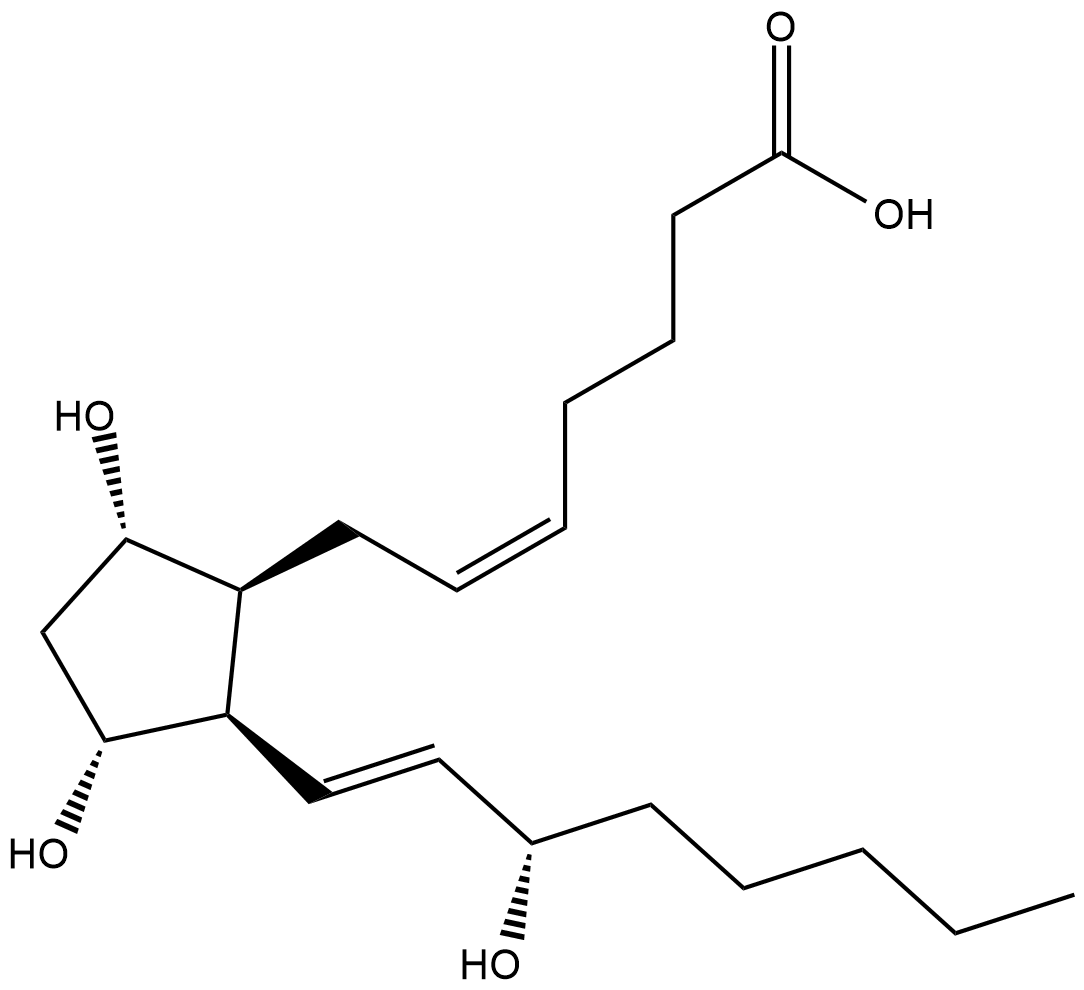
-
GC18994
8-iso Prostaglandin F2β
8-iso Prostaglandin F2β (8-iso PGF2β) is an isomer of PGF2α with a non-enzymatic, non-cyclooxygenase origin.
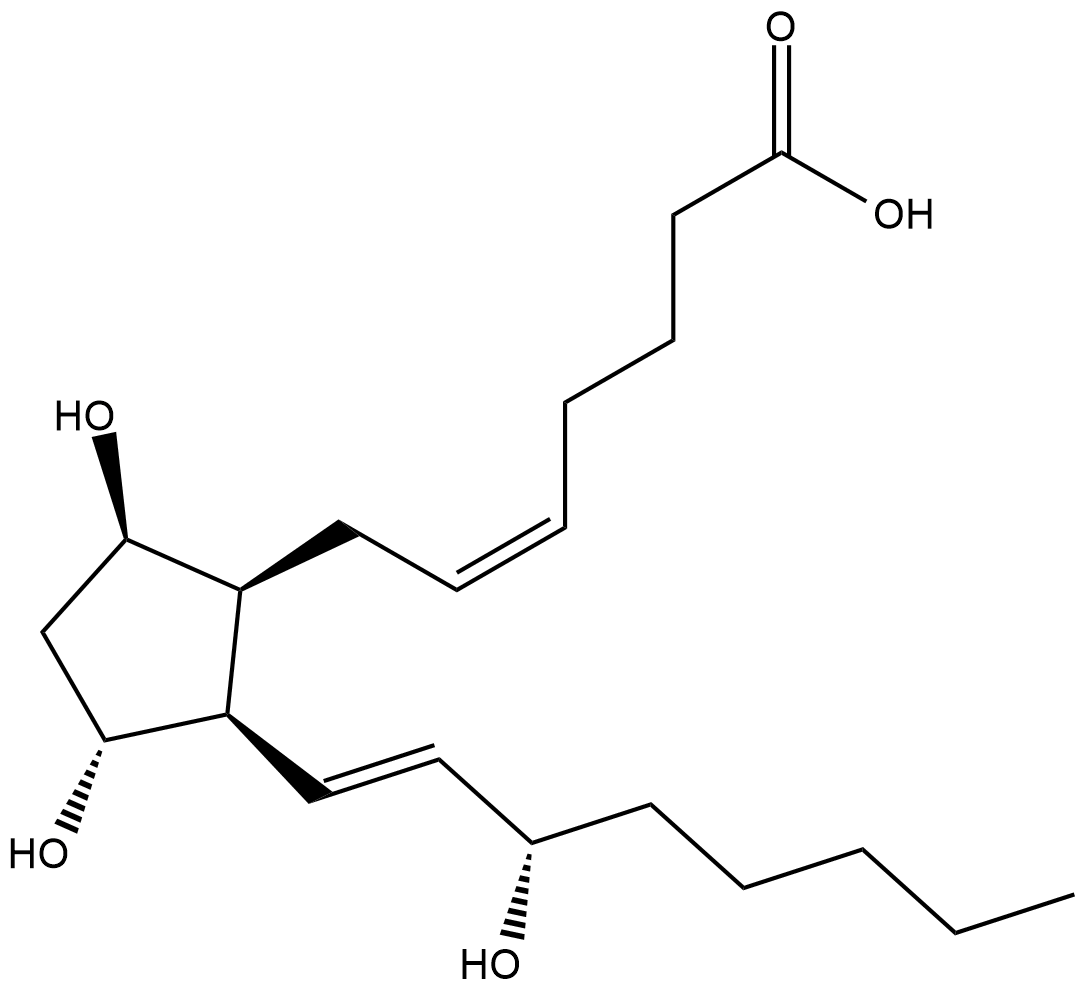
-
GC18389
9-cis Retinal
9-cis Retinal is a natural retinoid that is produced by oxidation of 9-cis retinol by cis-retinol dehydrogenase (cRDH).
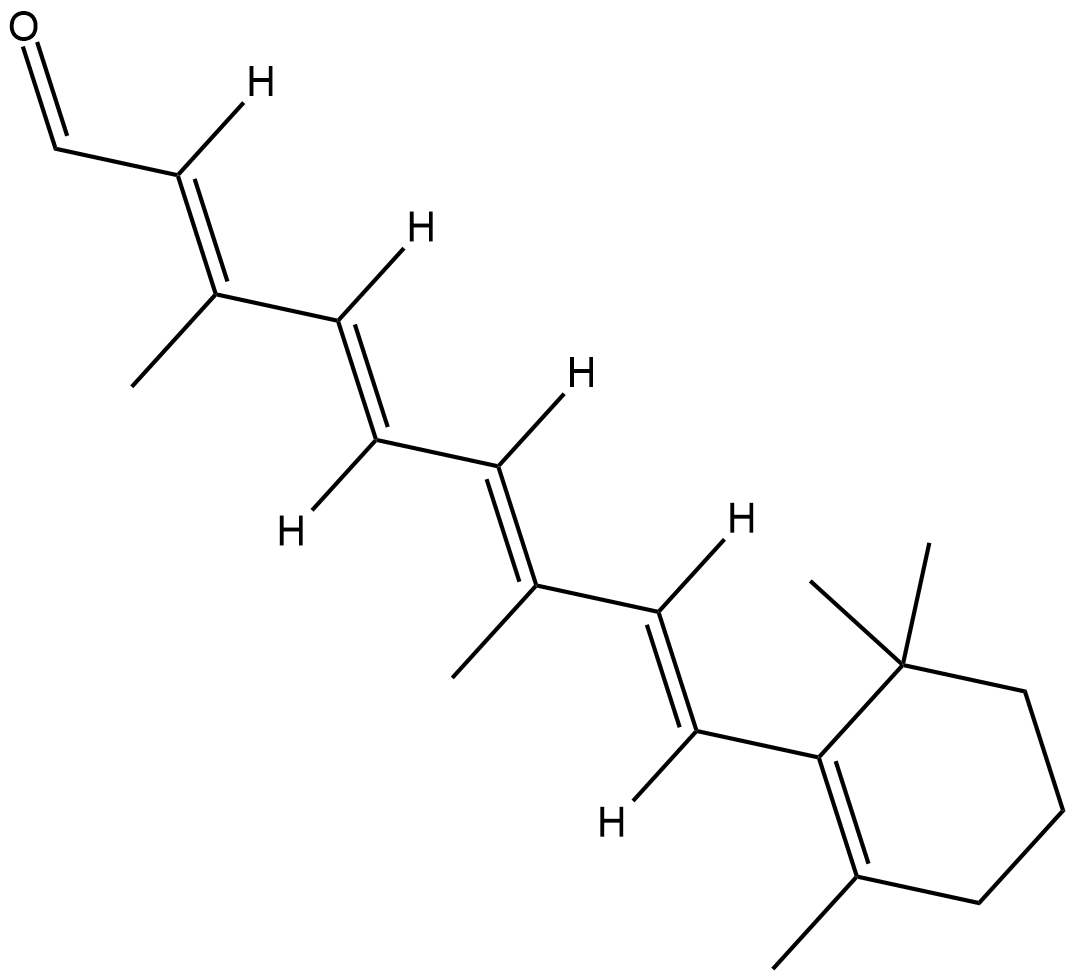
-
GC38883
9-Ethyladenine
9-Ethyladenine is a partially effective inhibitor of APRT (adenine phosphoribosyltransferase).
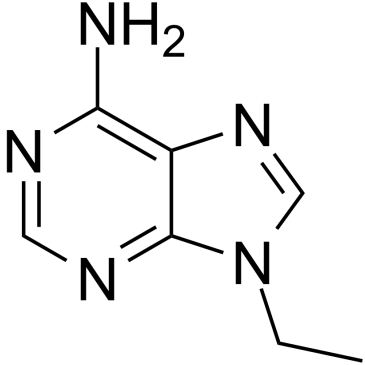
-
GC38264
Ac-Ala-OH
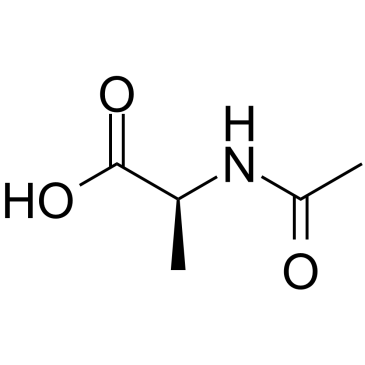
-
GA11174
Ac-Arg-OH.2H2O
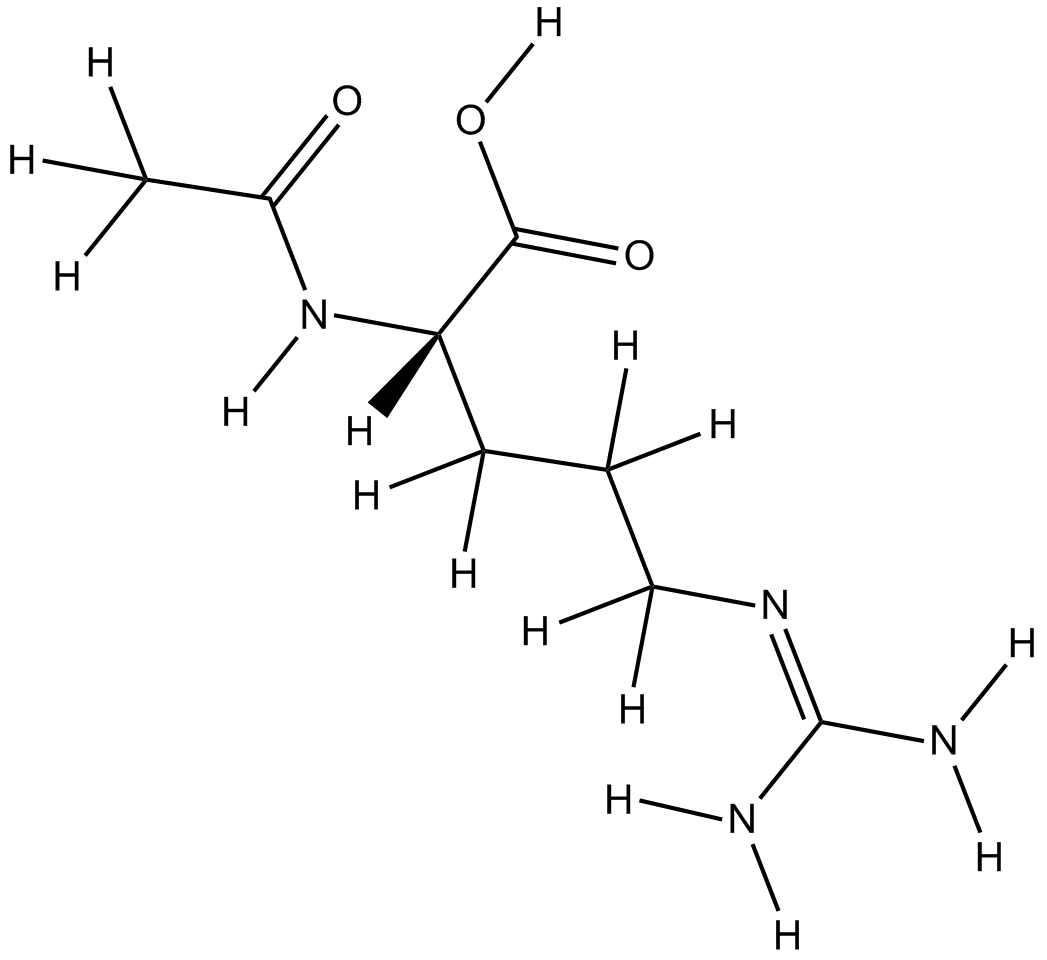
-
GA20489
Ac-Asn-OH
Ac-Asn-OH is an endogenous metabolite.

-
GA10446
Ac-DL-Trp-OH
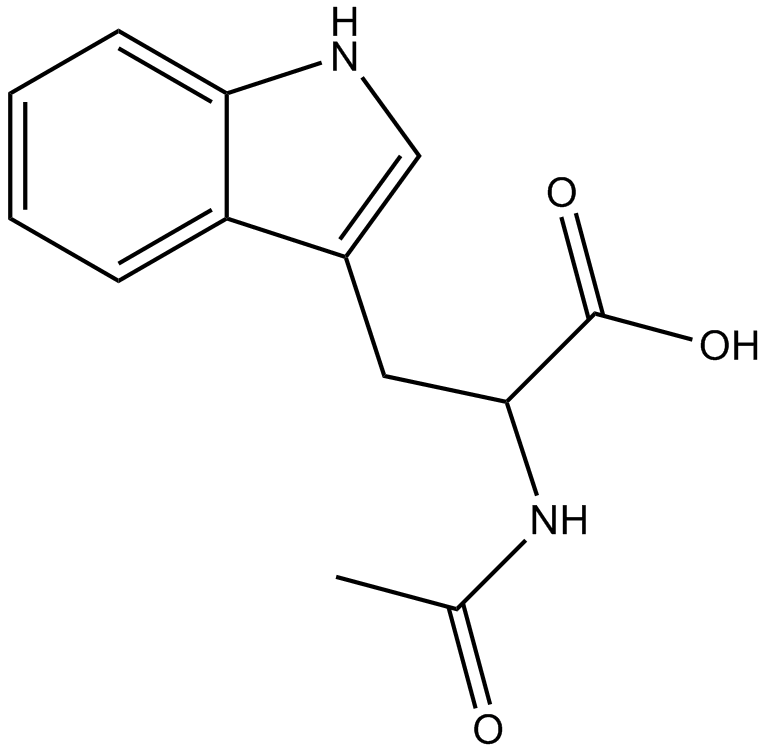
-
GA10356
Ac-Gly-OH
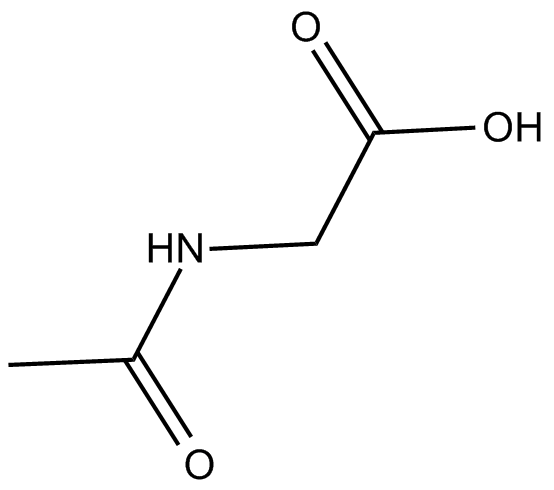
-
GA10825
Ac-His-OH
Ac-His-OH

-
GA20612
Ac-Lys-OH
Ac-Lys-OH is an endogenous metabolite.

-
GA20680
Ac-Val-OH

-
GC35228
Aceglutamide
Aceglutamide (α-N-Acetyl-L-glutamine) is a psychostimulant and nootropic, used to improve memory and concentration.
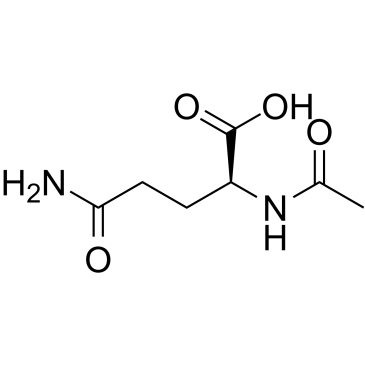
-
GC38317
Acetamide
Acetamide is used as an intermediate in the synthesis of methylamine, thioacetamide, and insecticides, and as a plasticizer in leather, cloth and coatings. Acetamide has carcinogenicity.
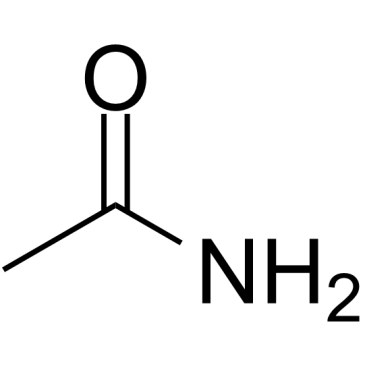
-
GC12917
Acetaminophen
A COX inhibitor
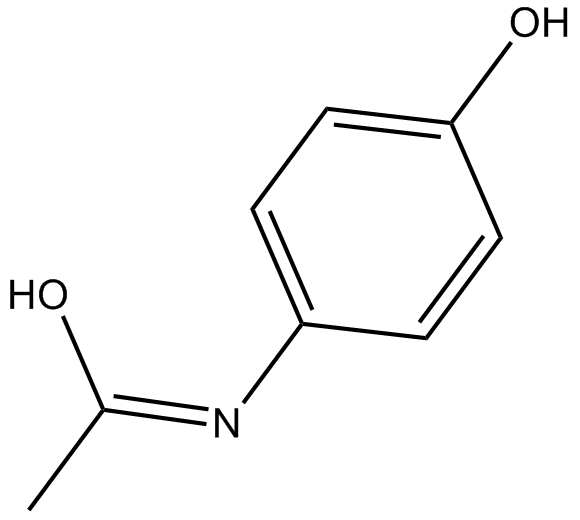
-
GC64137
Acetaminophen-d3
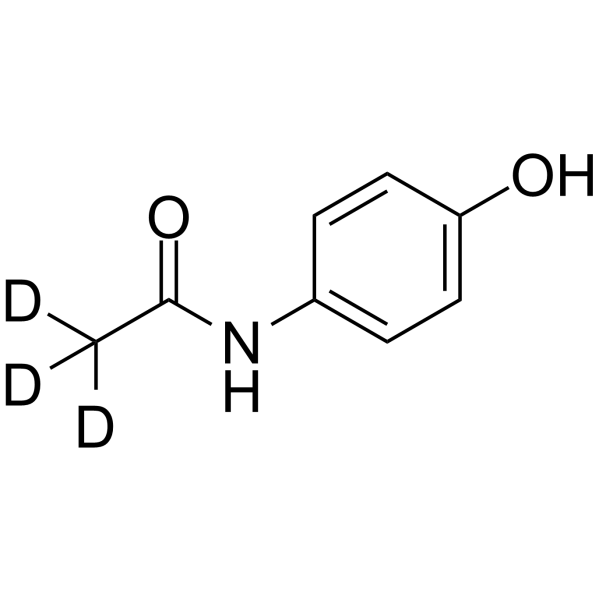
-
GC42697
Acetyl Coenzyme A (sodium salt)
Acetyl-coenzyme A (Acetyl-CoA) trisodium is a membrane-impermeant central metabolic intermediate, participates in the TCA cycle and oxidative phosphorylation metabolism.

-
GC60555
Acetyl phosphate(lithium potassium)
Acetyl phosphate(lithium potassium) is an endogenous metabolite.
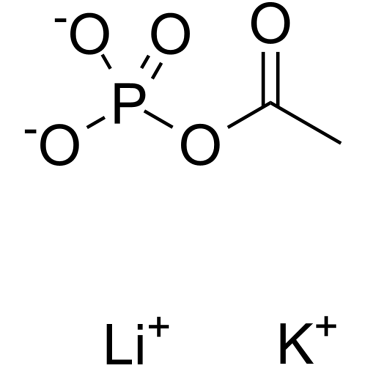
-
GC46789
Acetyl-L-carnitine-d3 (chloride)
An internal standard for the quantification of L-acetylcarnitine

-
GC68097
Acetyl-L-carnitine-d3 hydrochloride

-
GC14142
Acetylcholine Chloride
Major transmitter at many nervous sites
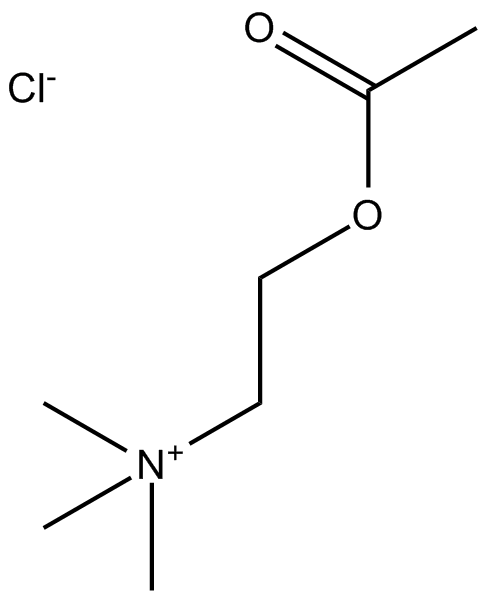
-
GC11786
Acetylcysteine
Acetylcysteine is the N-acetyl derivative of CYSTEINE.
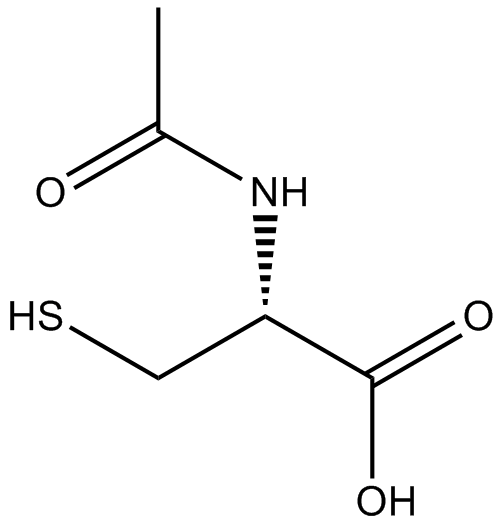
-
GC13432
Adenine
High affinity adenine receptor agonist
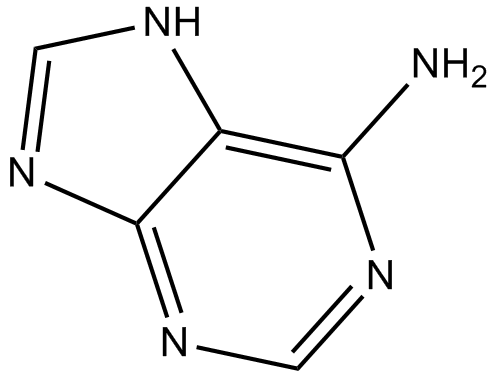
-
GC62828
Adenine monohydrochloride hemihydrate
Adenine monohydrochloride hemihydrate is an endogenous metabolite.
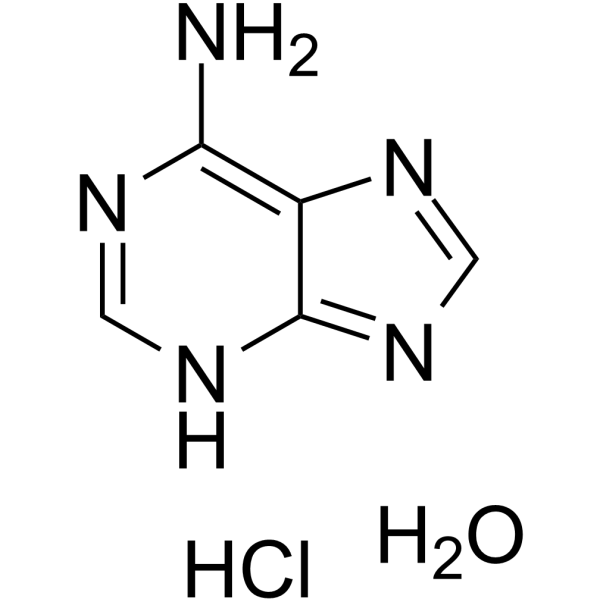
-
GC17278
Adenine sulfate
Adenine sulfate (6-Aminopurine hemisulfate), a purine, is one of the four nucleobases in the nucleic acid of DNA. Adenine sulfate acts as a chemical component of DNA and RNA. Adenine sulfate also plays an important role in biochemistry involved in cellular respiration, the form of both ATP and the cofactors (NAD and FAD), and protein synthesis.
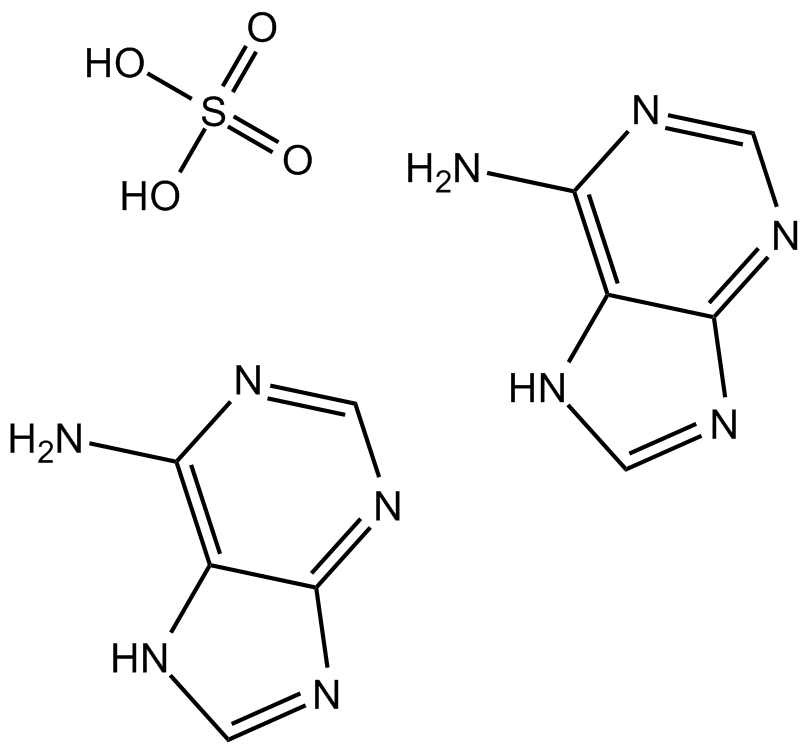
-
GC14106
Adenosine
nucleoside
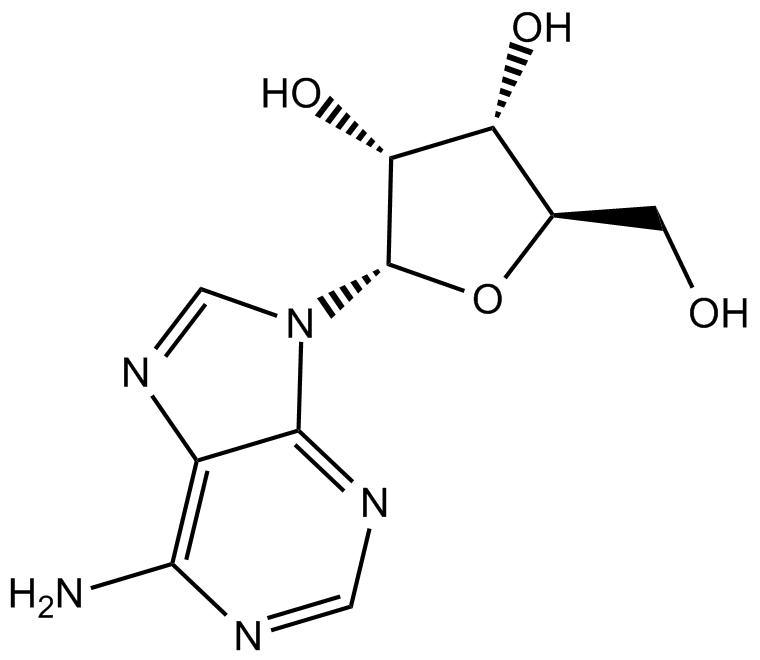
-
GC19630
Adenosine 2′-monophosphate
Adenosine 2′-monophosphate (2'-AMP) is converted by extracellular 2',3'-CAMP.
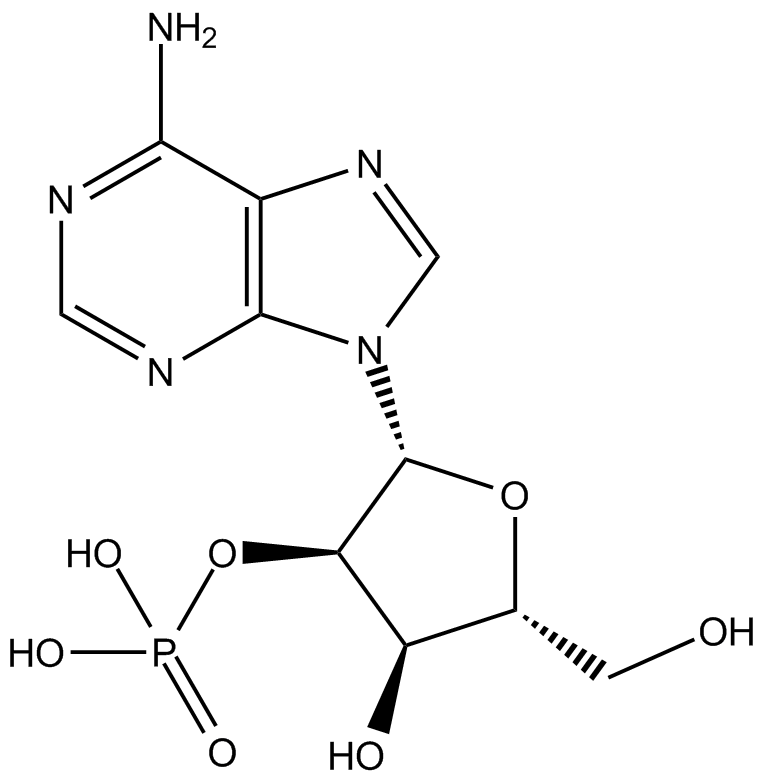
-
GC10880
Adenosine 3-5-cyclic monophosphate
A second messenger
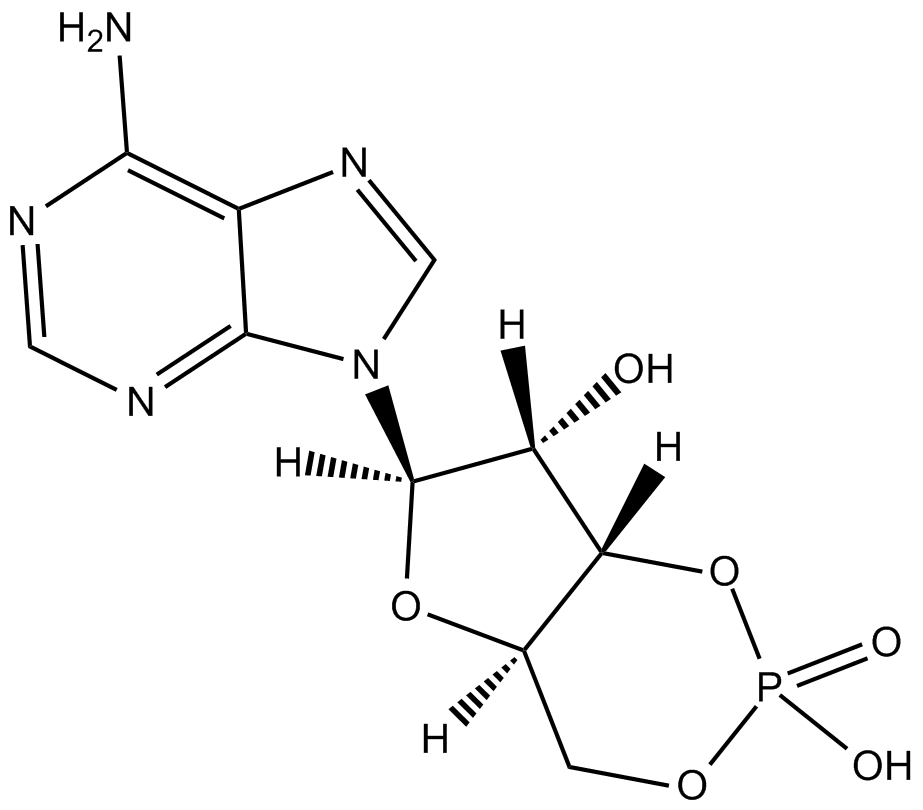
-
GC17558
Adenosine 5'-triphosphate disodium salt hydrate
Adenosine 5'-triphosphate disodium salt hydrate (Adenosine 5'-triphosphatedisodium salt hydrate) is a central component of energy storage and metabolism in vivo, provides the metabolic energy to drive metabolic pumps and serves as a coenzyme in cells.
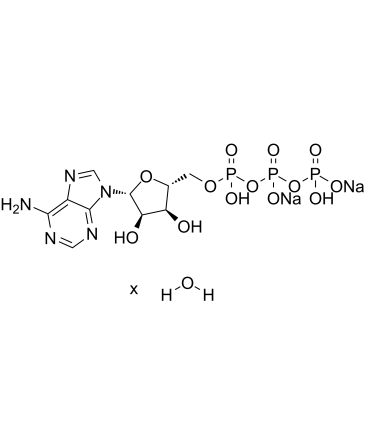
-
GC13172
Adenosine 5-monophosphate
Adenosine 5-monophosphate is a key cellular metabolite regulating energy homeostasis and signal transduction.
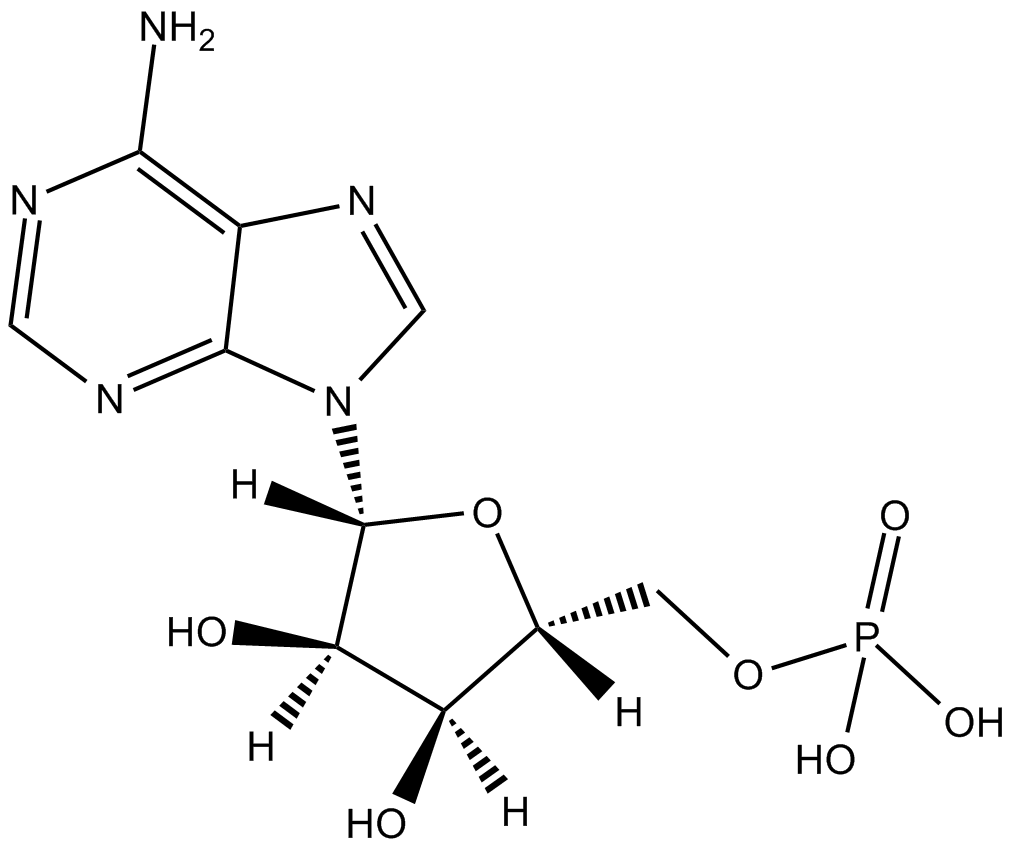
-
GC11969
Adenosine-5'-diphosphate
Agonist of purinergic receptors
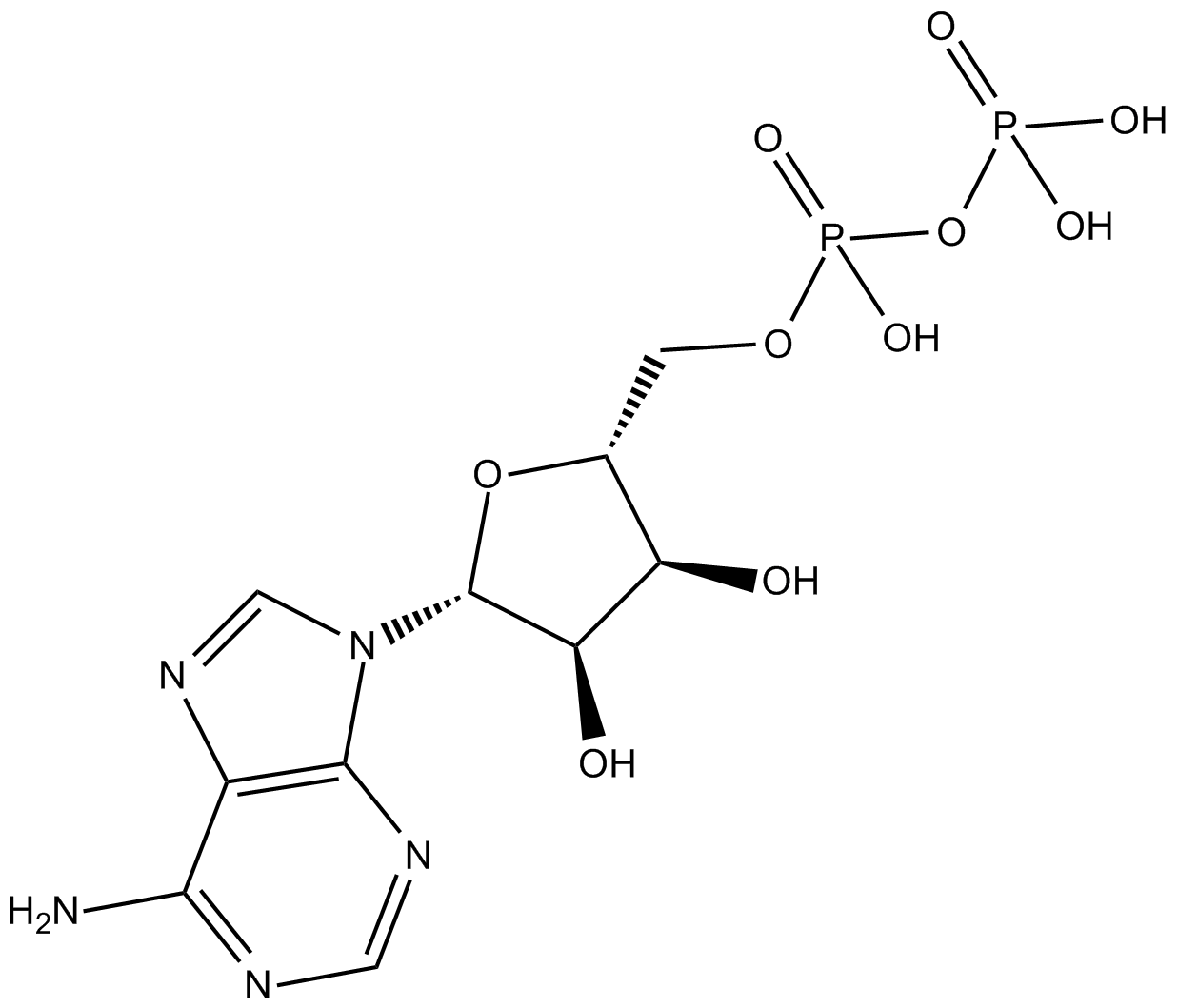
-
GC64916
Adenylosuccinic acid tetraammonium
Adenylosuccinic acid tetraammonium (Adenylosuccinate; Aspartyl adenylate) is a purine ribonucleoside monophosphate and plays a role in nucleotide cycle metabolite.
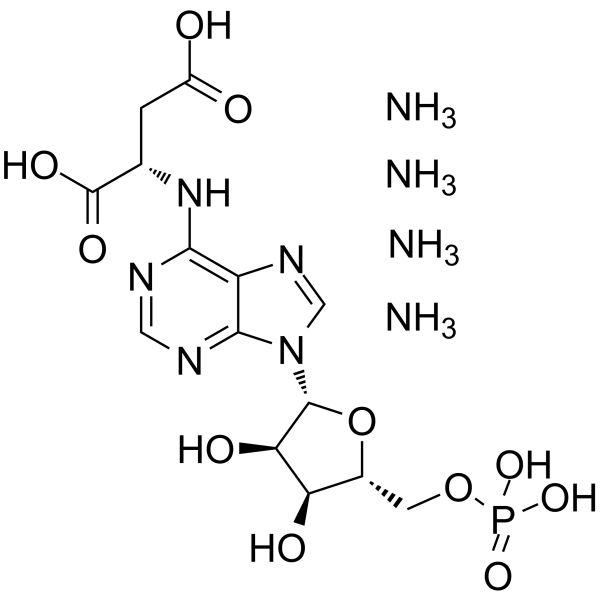
-
GC33805
Adipic acid
Adipic acid is found to be associated with HMG-CoA lyase deficiency, carnitine-acylcarnitine translocase deficiency, malonyl-Coa decarboxylase deficiency, and medium Chain acyl-CoA dehydrogenase deficiency, which are inborn errors of metabolism.
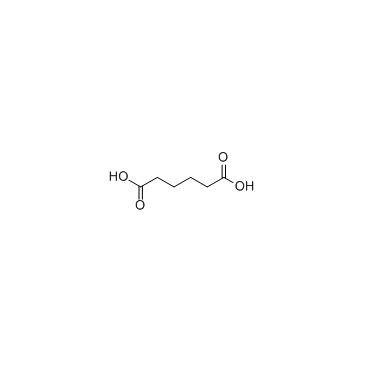
-
GC31602
Adrenic Acid (cis-7,10,13,16-Docosatetraenoic acid)
Adrenic Acid (cis-7,10,13,16-Docosatetraenoic acid) (cis-7,10,13,16-Docosatetraenoic acid) is a naturally polyunsaturated fatty acid in the adrenal gland, brain, kidney, and vasculature.
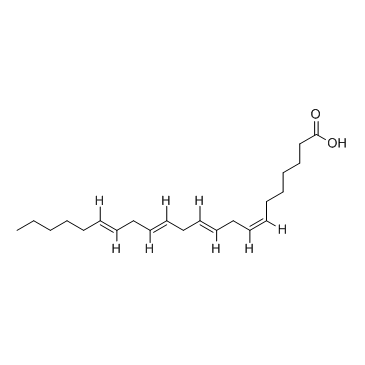
-
GC35261
Aflatoxin B1
Aflatoxin B1, as a class of carcinogenic mycotoxins produced by Aspergillus fungi, always lead to the development of hepatocellular carcinoma (HCC) in humans and animals.
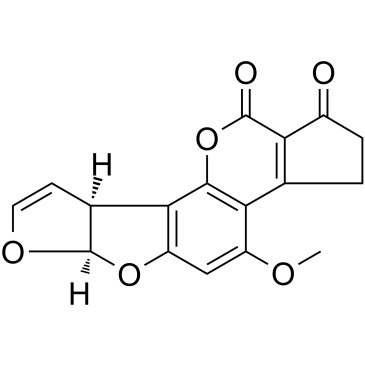
-
GC16831
Agmatine sulfate
α2-adrenergic receptor ligand
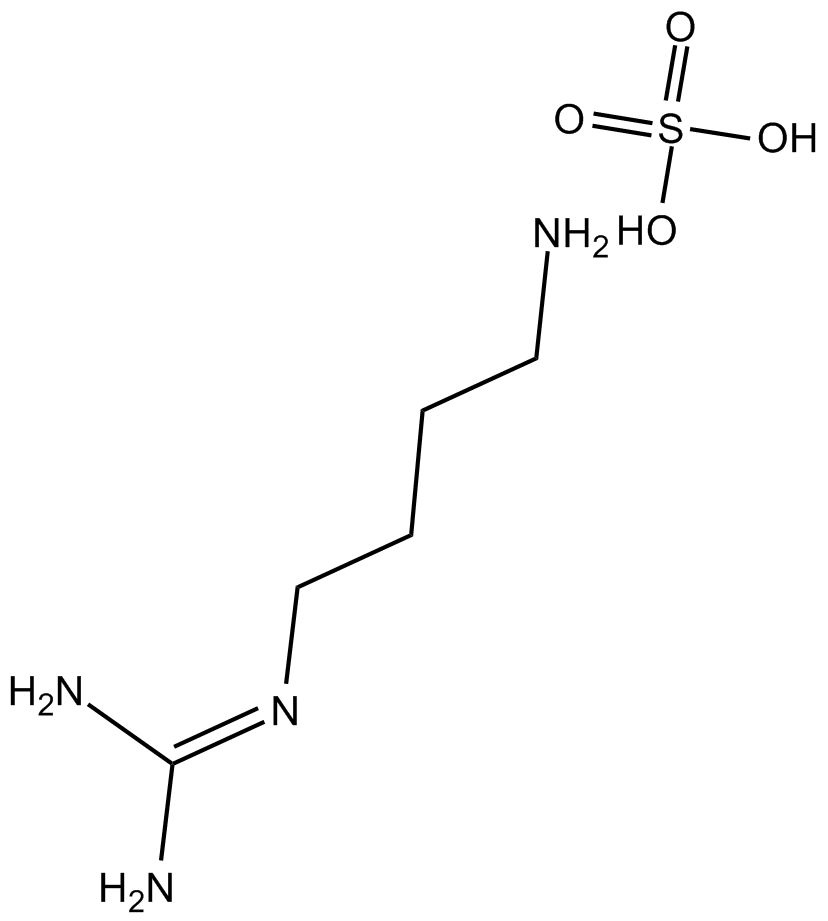
-
GC41390
Aldosterone
Aldosterone is a steroid hormone secreted by the adrenal cortex and is the principle mineralocorticoid controlling sodium and potassium balance

-
GC19584
Alkaline Phosphatase
10-50units/mg protein(37℃,pH 9.8)

-
GC14511
all-trans Retinal
converted to retinoic acid in vivo
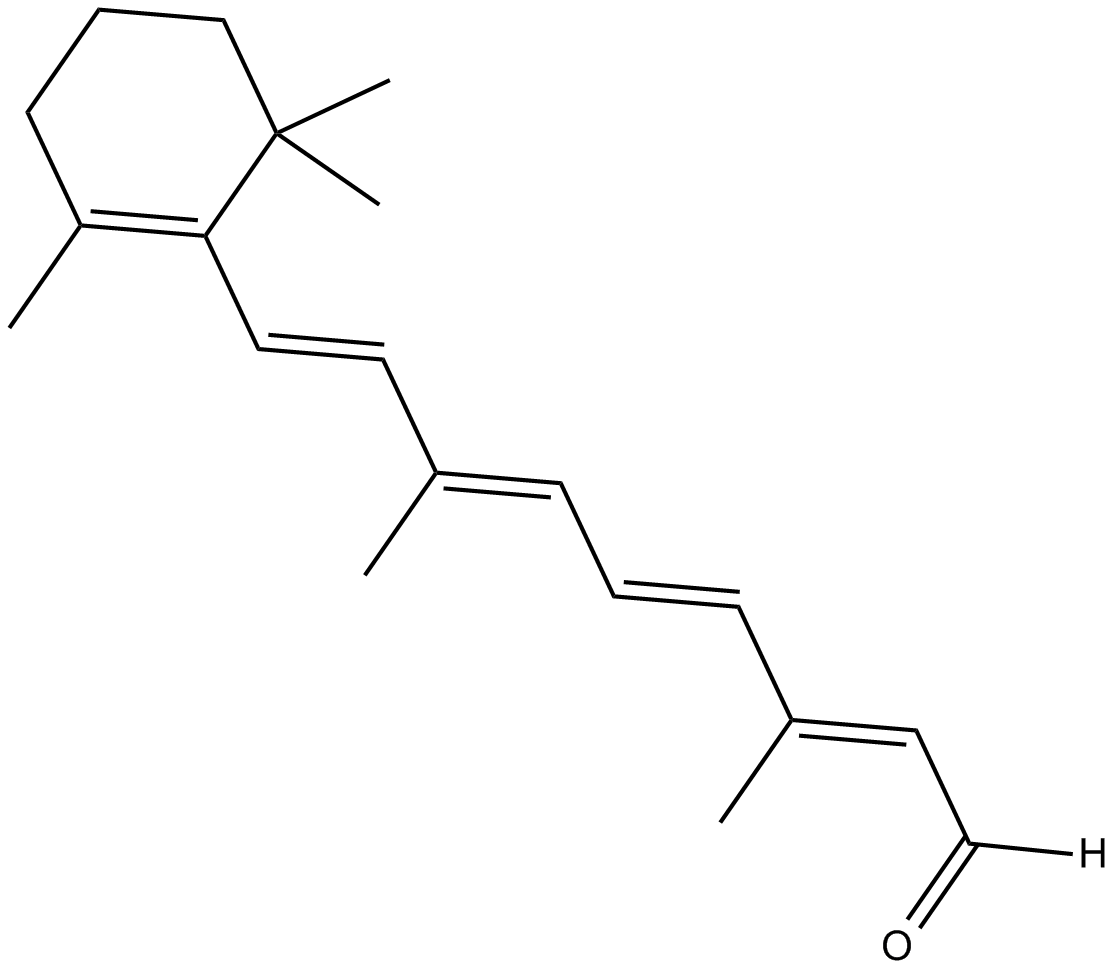
-
GC31420
all-trans-4-Oxoretinoic acid (all-trans 4-Keto Retinoic Acid)
all-trans-4-Oxoretinoic acid (all-trans 4-Keto Retinoic Acid), an active metabolite of vitamin A, induces gene transcription via binding to nuclear retinoic acid receptors (RARs).
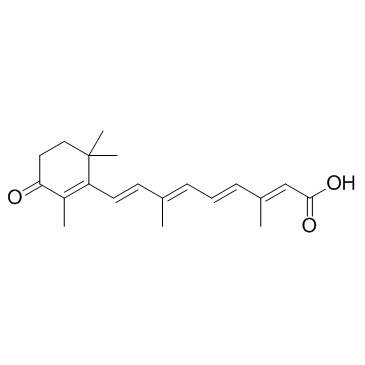
-
GC61487
all-trans-Anhydro Retinol
all-trans-Anhydro Retinol (Anhydrovitamin A) is a metabolite of Vitamin A.
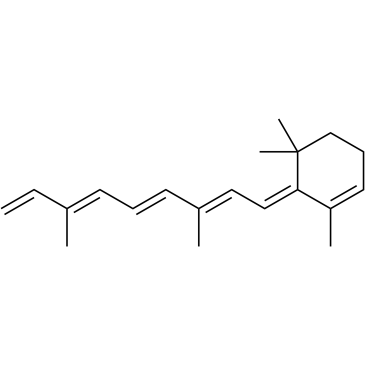
-
GC60574
Allantoic acid
Allantoic acid is a degradative product of uric acid and associated with purine metabolism.
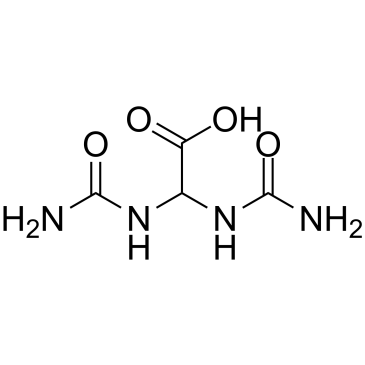
-
GN10492
Allantoin
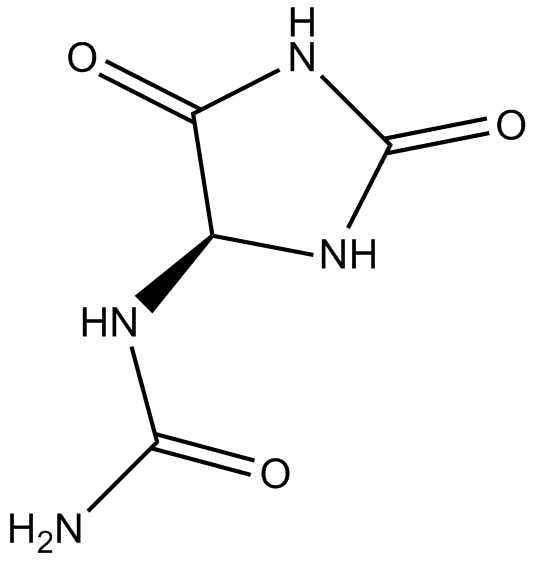
-
GC33807
Alloepipregnanolone
An Analytical Reference Standard
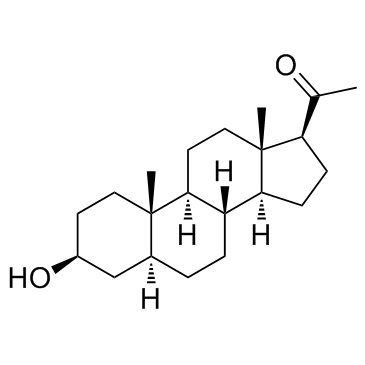
-
GC35295
Allopurinol riboside
A ribonucleoside
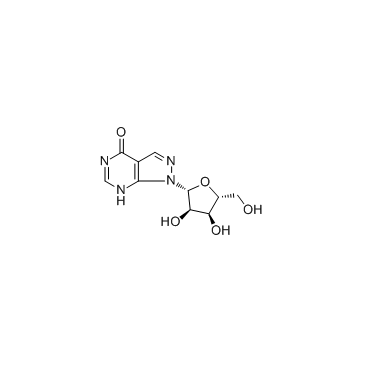
-
GC38734
Allotetrahydrocortisol
Allotetrahydrocortisol (5a-Tetrahydrocortisol) is a metabolite of Cortisol.
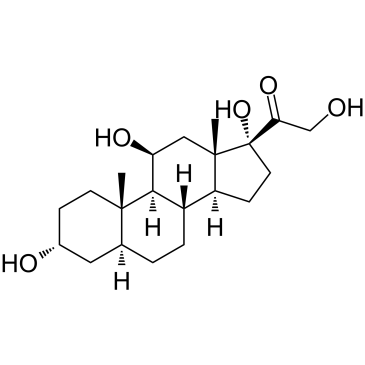
-
GC38885
alpha-D-glucose
alpha-D-glucose is an endogenous metabolite.
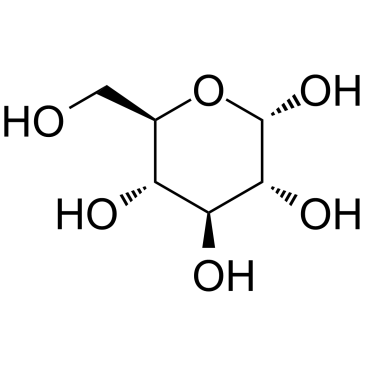
-
GC19750
alpha-L-Rhamnose
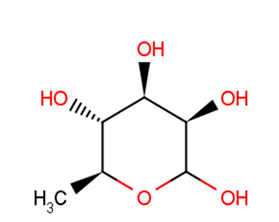
-
GC17347
Alprostadil
Alprostadil (Alprostadil) is a prostanoid receptor ligand, with Kis of 1.1 nM, 2.1 nM, 10 nM, 33 nM and 36 nM for mouse EP3, EP4, EP2, IP and EP1, respectively.
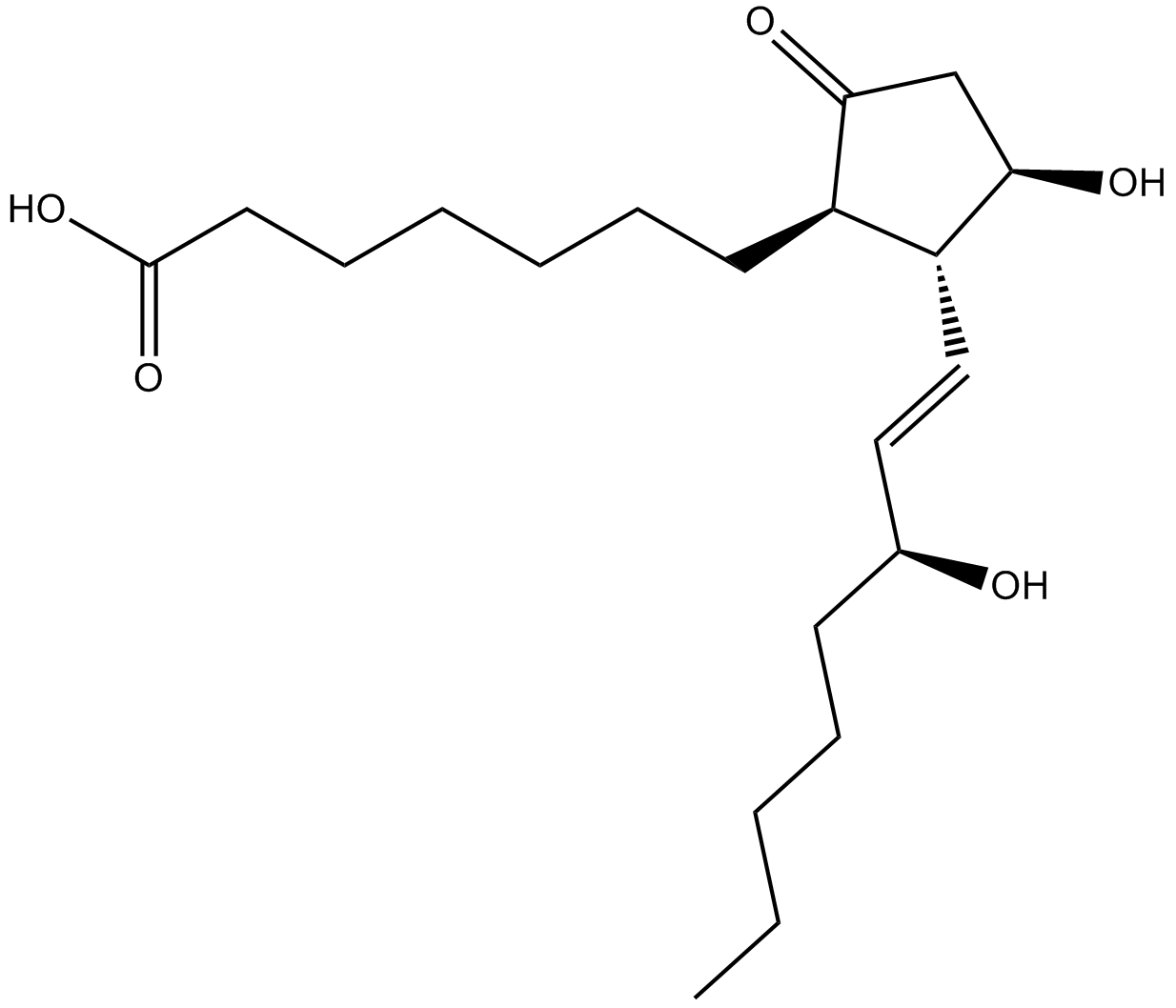
-
GC35320
Aminoadipic acid
Aminoadipic acid is an intermediate in the metabolism of lysine and saccharopine.
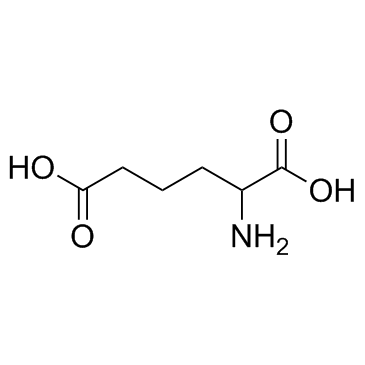
-
GC35321
Aminomalonic acid
Aminomalonic acid is an amino endogenous metabolite, acts as a strong inhibitor of L-asparagine synthetase from Leukemia 5178Y/AR (Ki= 0.0023 M) and mouse pancreas (Ki= 0.0015 M) in vitro. Aminomalonic acid is a potential biomarker to discriminate between different stages of melanoma metastasis.
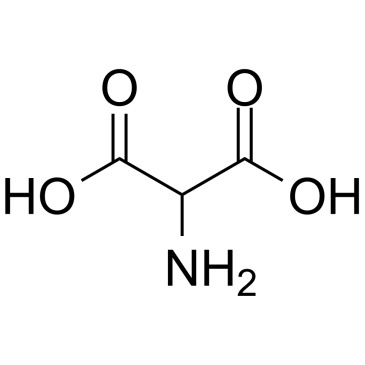
-
GC35339
Anandamide
An immune modulator in the central nervous system
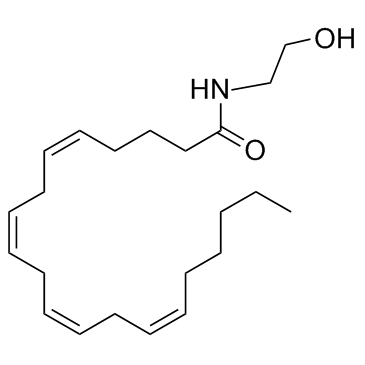
-
GC30842
Androsterone (5α-Androstan-3α-ol-17-one)
An androgenic steroid
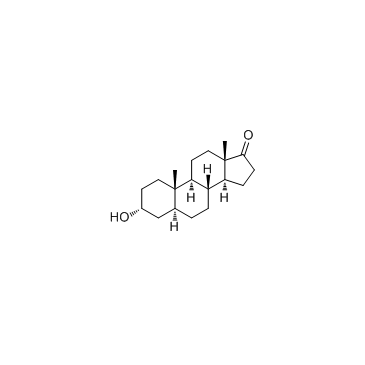
-
GC61496
Angiotensin (1-7) (acetate)
Angiotensin 1-7 (Ang-(1-7)) acetate is an endogenous heptapeptide from the renin-angiotensin system (RAS) with a cardioprotective role due to its anti-inflammatory and anti-fibrotic activities in cardiac cells.
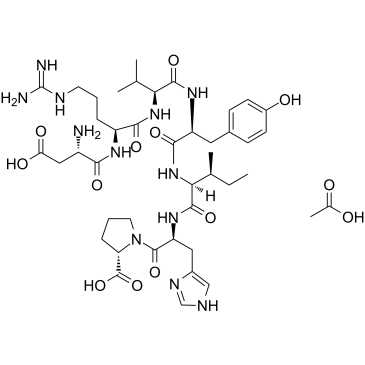
-
GC35355
Angiotensin III

-
GC35356
Angiotensin III TFA
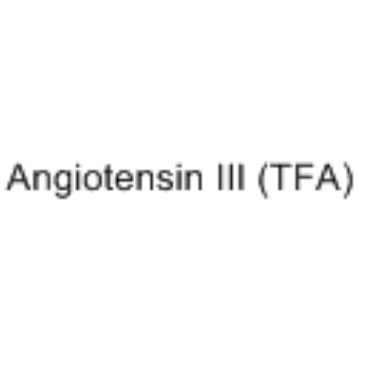
-
GC32604
Angiotensinogen (1-14), human
Angiotensinogen (1-14), human is a fragment of the renin substrate angiotensinogen.

-
GC30722
Anserine
Anserine, a methylated form of Carnosine, is an orally active, natural Histidine-containing dipeptide found in skeletal muscle of vertebrates.
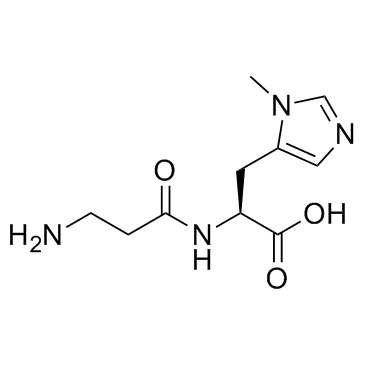
-
GC35361
Antineoplaston A10
Antineoplaston A10, a naturally occurring substance in human body, is a Ras inhibitor potentially for the treatment of glioma, lymphoma, astrocytoma and breast cancer.
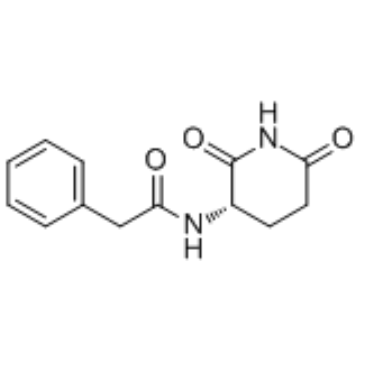
-
GC61691
Arabinose
Arabinose is an endogenous metabolite.
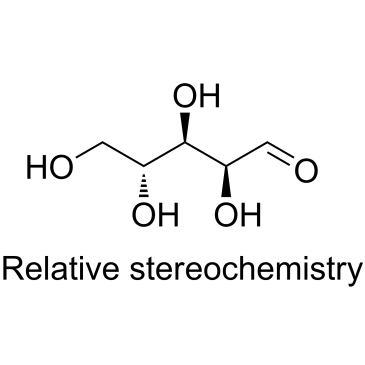
-
GC35379
Arachidic acid
A longchain saturated fatty acid
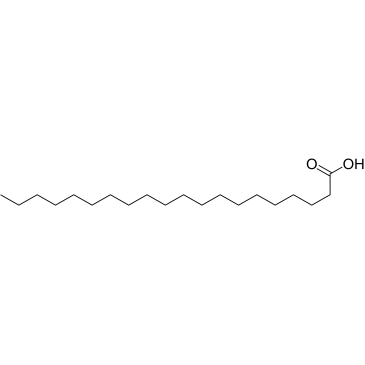
-
GC31725
Arachidonic acid (Immunocytophyt)
Arachidonic acid (Immunocytophyt) is an essential fatty acid and a major constituent of biomembranes.
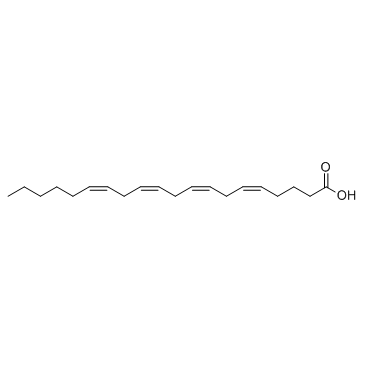
-
GC67243
Arachidonoyl coenzyme A lithium
Arachidonoyl coenzyme A lithium is an unsaturated fatty acyl coenzyme A, formed by the condensation of the thiol group of coenzyme A with the carboxyl group of arachidonic acid.
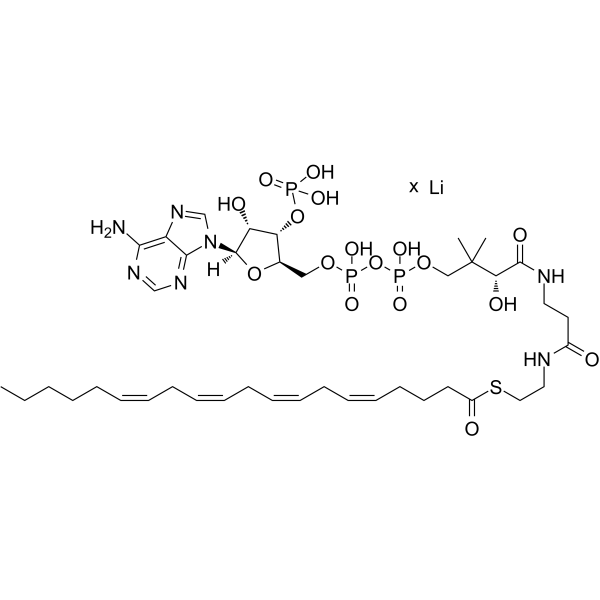
-
GC42846
Arachidonoyl-L-carnitine (chloride)
Carnitine facilitates the transport of fatty acids into the mitochondria to be used in fatty acid metabolism.

-
GC30675
Argininic acid
Argininic acid is an α-amino acid that is used in the biosynthesis of proteins.
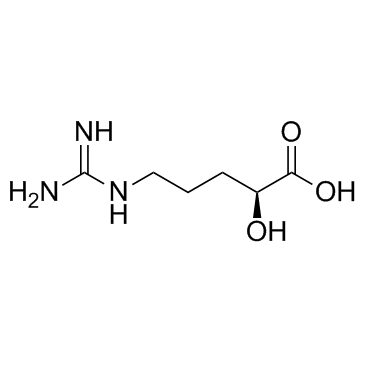
-
GC32457
Asymmetric dimethylarginine
An endogenous NOS inhibitor
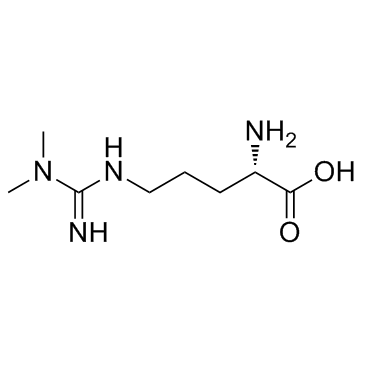
-
GC35420
ATP
ATP, as a phosphate-group donor for substrate activation in metabolic reactions.
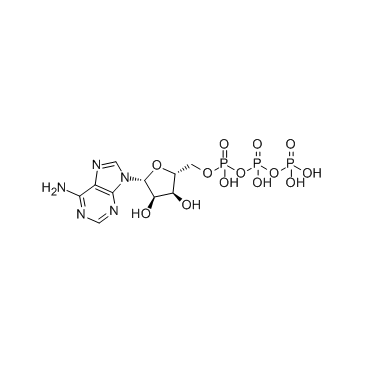
-
GC61448
ATP disodium trihydrate
ATP disodium trihydrate (Adenosine 5'-triphosphate disodium trihydrate) is a central component of energy storage and metabolism in vivo.
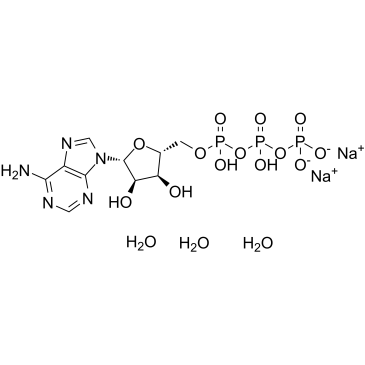
-
GC46893
Atranorin
A depside lichen metabolite with diverse biological activities

-
GC11843
Azaguanine-8
Azaguanine-8 is a purine analogue that shows antineoplastic activity. Azaguanine-8 functions as an antimetabolite and easily incorporates into ribonucleic acids, interfering with normal biosynthetic pathways, thus inhibiting cellular growth.
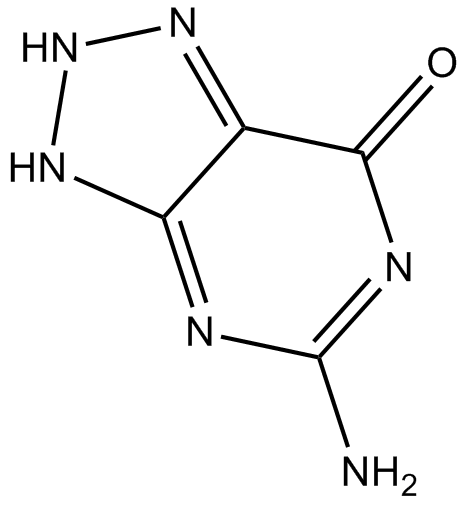
-
GC30219
Azelaic acid (Nonanedioic acid)
Azelaic acid (Nonanedioic acid) is an organic compound produced by the ozonolysis of oleic acid; component of a number of hair and skin conditioners.
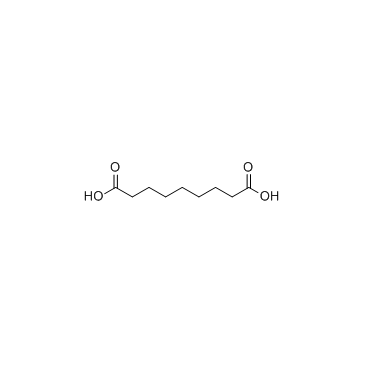
-
GC38143
Batilol
3-(Octadecyloxy)propane-1,2-diol is an endogenous metabolite.
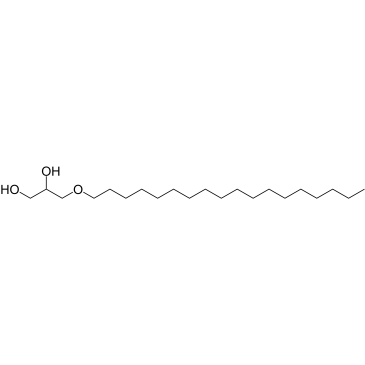
-
GC50134
Bengamide B
Potent inhibitor of NF-κB activation
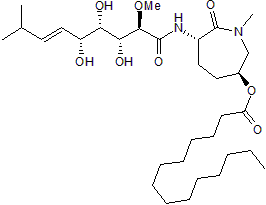
-
GC63577
Benzamide-15N
Benzamide-15N (Benzenecarboxamide-15N) is a 15N-labeled Benzamide.
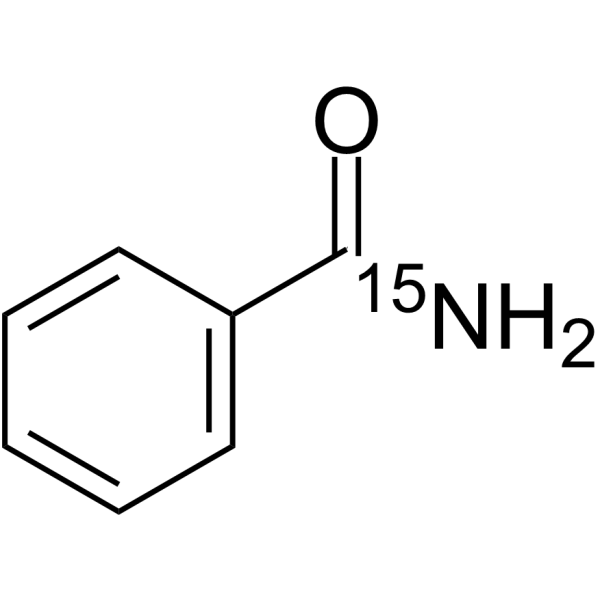
-
GC65332
Benzoic acid-13C6
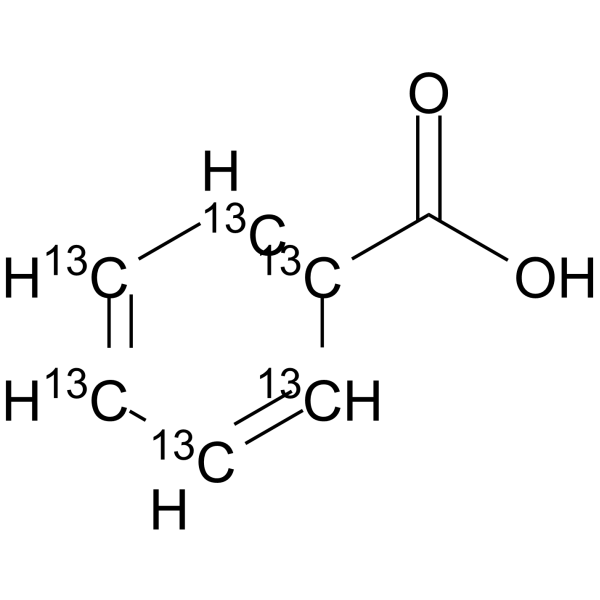
-
GC60633
Benzophenone
Benzophenone is an endogenous metabolite.
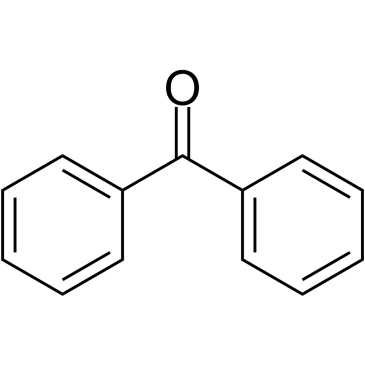
-
GC60640
Benzylideneacetone
Benzylideneacetone is an endogenous metabolite.
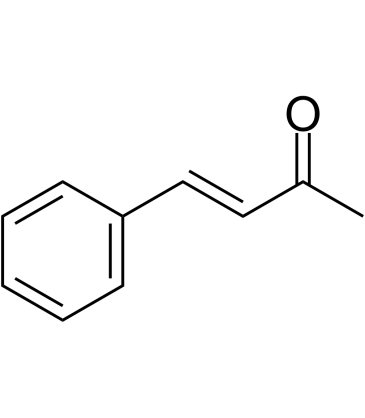
-
GC30727
Beta-Cortol
An endogenous metabolite of cortisol
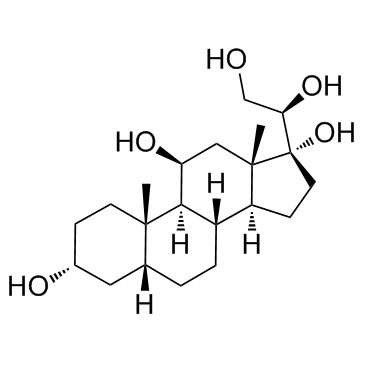
-
GC19134
beta-D-(-)-Arabinose
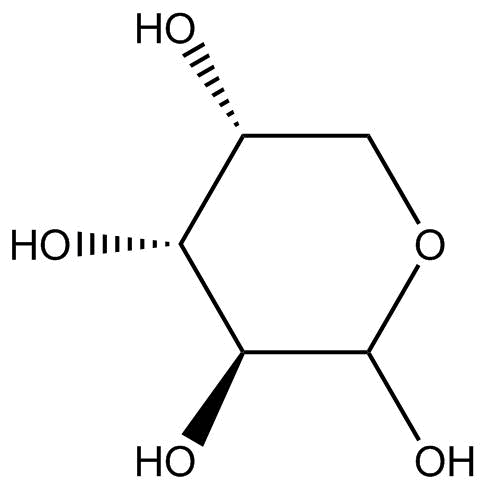
-
GC10582
Betacarotene
Betacarotene (Provitamin A), a carotenoid compound, is a naturally-occurring vitamin A precursor.
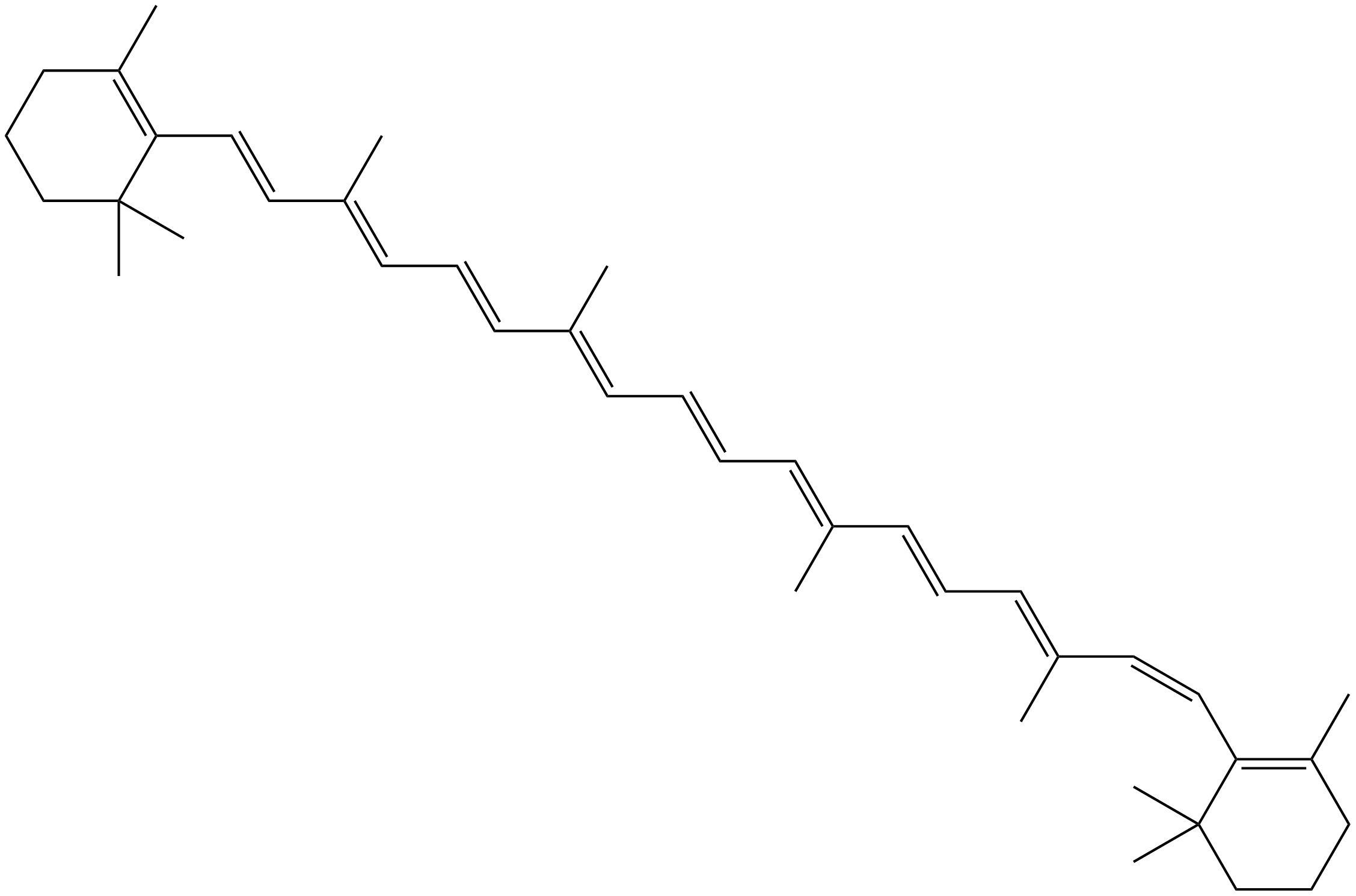
-
GN10555
Bilirubin



